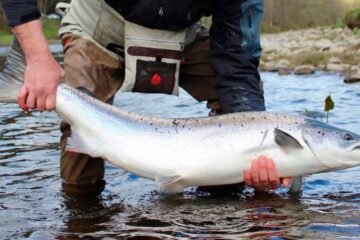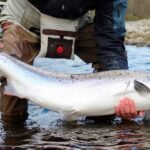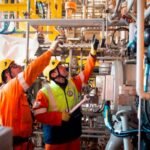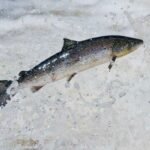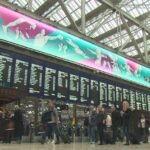Ten years on, Charles Jencks’ Crawick Multiverse turns an industrial scar in Dumfries and Galloway into a living monument to space, science, and community
In the rolling hills of southern Scotland, between the towns of Sanquhar and Kirkconnel, an unlikely portal to the cosmos winds through the Earth. Here, spiralling mounds represent galaxies, standing stones echo the building blocks of the universe, and families picnic beneath a sun that warms what was once the cold, barren bed of a depleted open-cast coal mine.
This is the Crawick Multiverse, the late Charles Jencks’ final and perhaps most ambitious land art installation. Built atop a landscape once hollowed out by heavy industry, it turns ten this year—and has become one of the most quietly extraordinary public spaces in Scotland.
From Black Gold to Galactic Gold
The transformation is staggering.
Where coal was once scraped from the ground in the 1980s, Jencks sculpted cosmic forms out of the raw terrain: twin spirals for the Andromeda and Milky Way galaxies, a Cosmic Mount of boulders aligned with solstices, and a north–south avenue lined with hundreds of stones salvaged from the old mine.
“It was a depleted site,” says Gillian Khosla, chair of the Crawick Multiverse Trust. “Everything of value had been taken. What open-cast mining did was take, take, take—and what we’re doing here is add: interest, nature, and value back to the community.”
The land belongs to the Duke of Buccleuch, one of Scotland’s largest landowners. In 2005, he invited Jencks—famed for his cosmic symbolism and work at the nearby Garden of Cosmic Speculation—to imagine a new purpose for the 55-acre scar.
The result, which opened to the public in 2015, is part public park, part scientific exploration, and part open-air sculpture.

A Space for Everyone
On any given day, you might find hikers tracing planetary paths, children tumbling down slopes, or students studying cosmology beside an art piece that mirrors the multiverse theory. The terrain itself becomes a metaphor for time, matter, and motion.
“We’re open to everybody’s way of looking at it,” says Caroline McMillan, a local farmer and trustee. “It can be an artsy thing, or a place for a coffee—or just somewhere to roll down hills with your kids.”
Visitors ascend the galaxy mounds, winding their way to sandstone boulders perched atop the spirals. Though few pause to contemplate galactic collision, the symbolism remains powerful: Andromeda and the Milky Way, slowly drifting toward eventual union, billions of years from now.
“There’s something poetic about reimagining a site of environmental extraction as a meditation on the cosmos,” says Khosla.
Rewilding with Meaning
Crawick Multiverse isn’t just about aesthetics. It’s also a case study in regenerative land use.
The site is now home to native grasses, birds, and wildlife—not to mention several annual festivals and educational events. It has quietly become a symbol of how art and science can stitch together environmental wounds left by industrial collapse.
“The scars of mining are often deep and long-lasting,” says McMillan. “But when you offer something back—something meaningful—you create a new story.”
Indeed, the Multiverse’s creation mirrors a broader narrative in Dumfries and Galloway, where former coal and steel towns are trying to reshape their identity through culture, tourism, and sustainability.
A Living Monument to Jencks
Charles Jencks, who died in 2019, left behind a legacy of monumental land art. But Crawick may be his most communal work—designed not for elite institutions, but for local people and curious passersby.
Unlike his more polished installations, the Multiverse remains rugged, elemental. It changes with the weather. Wind whistles across ridges. Mist settles in valleys. Summer sun draws out the greens, purples, and golds of wild flora.
There are no velvet ropes, no plaques explaining every detail.
“The beauty of this place is that you don’t need to understand it to feel something here,” says McMillan.
Ten Years On, The Universe Keeps Expanding
As Crawick Multiverse enters its second decade, there are plans to expand educational outreach and attract more visitors. But the soul of the project remains the same: a place where ancient Earth meets infinite space, and where the people of Dumfries and Galloway can rediscover pride in a land once left behind.
Like the galaxies it represents, the Multiverse is still in motion—still growing, still converging with the future.



